 |
| |
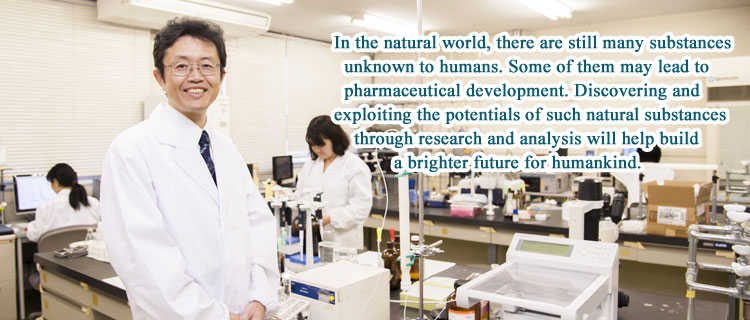 |
| |
|
“Monotori (substance collection),” an activity in finding new useful materials
|
| |
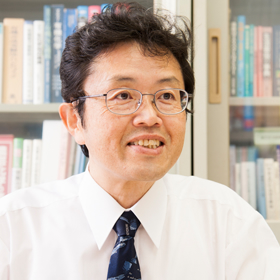 |
|
Specializing in natural products chemistry, Professor Ohta’s research focuses on finding new natural organic compounds that are physiologically active and clarifying their structures and functions. In the field of biology, this kind of effort is called “monotori,” meaning “collecting substances” that are physiologically active. “This process is also called ‘screening,’ an activity aimed at finding substances that are still unknown but useful.”
“We place particular emphasis on discovering organic compounds that can be used as pharmaceutical materials or help improve human health,” says Professor Ohta. Specifically, we study sponges, insects, plants, microorganisms, and more. In particular, Professor Ohta has made various accomplishments in the research of sponges, among other marine species. One of his accomplishments is the discovery of “exiguolide.”
|
|
According to Professor Ohta, sponges inhabit rocks by attaching themselves to the rocks’ surfaces. The sponges’ bodies have many cancellous pores, through which they absorb water from around them and discharge it. Sponges harbor in their pores such creatures as microorganisms, bacteria, and algae. Since all these symbiotic microbes are trying to expand their territories, they are constantly exposed to fierce competition for survival.
Some of these symbiotic microbes use chemical substances as weapons. They try to survive by producing “deadly poison” that they can use as a chemical weapon. Also, thanks to such deadly poison, the hosts of these microbes, namely sponges, can protect themselves from their enemies. Nonspecific toxins are not useful. But if we find a substance that can selectively interact with some specific biomolecules, we can use such chemical substances as lead compounds for the development of new anti-cancer drugs or cellular function regulating agents.
|
|
|
Exiguolide paving the way for the development of a new anti-cancer drug
|
| |
|
For some 20 years, Professor Ohta has engaged in research on sponges and has discovered several new substances along the way. In 2006, as a result of studying about 500 species of marine sponges inhabiting Japanese waters, he found exiguolide, a new bioactive substance found in marine sponge species Geodia exigua collected off Amami-Oshima, Kagoshima Prefecture, Japan.
Since around 2011, this new-found substance has attracted public attention and been covered by various media. Professor Ohta says, “The scope of our research responsibility is from isolating and analyzing organic compounds to identifying their structures. After that, other research groups conduct studies in stages.”
|
|
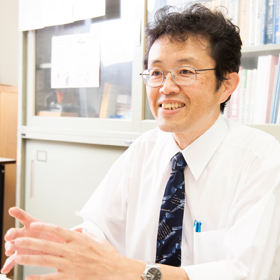 |
“In the case of exiguolide,” continues Professor Ohta, “Tohoku University’s research group furthered the study by examining the structure we had identified and confirmed that exiguolide specifically inhibits the proliferation of lung cancer cells. We now believe that exiguolide has the potential to lead to the development of a new anti-cancer drug in the future.”
What is essential in Professor Ohta’s research is “selectivity.” “Our group uses the bioassay method to determine whether extracts from sponges inhibit embryonic development or fertilization when put into the eggs of such echinoderms as starfish and sea urchins. Exiguolide was found to inhibit fertilization but not any other developmental processes.”
“If,” continued Professor Ohta, “we find that the substance in question has a high level of selectivity in inhibiting a certain enzyme, that particular substance can lead to the development of new pharmaceuticals.” However, the substances he tries to discover in his research are extremely small in quantity and so very difficult to find. To determine the usefulness of such substances, researchers must increase their amount through organic synthesis and closely study their properties. These research efforts constitute the foundation of pharmaceutical development. |
|
| |
|
Discovering new substances is as exciting as treasure hunting and seeing them put to good use is a sheer pleasure.
|
| |
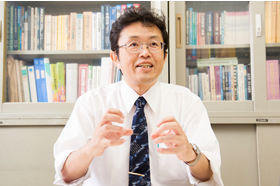
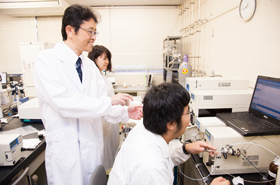 |
|
What motivated Professor Ohta to pursue a career in this field was instrumental analysis that he learned as a student. “I was intrigued by the fact that instrumental analysis allows us to reproduce and express in the form of structural formulae the chemical structures that we can’t see with our own eyes or even through the microscope. Using such analytical instruments, we can discover substances that have so far been completely unknown to us or hidden from us. Besides, we can give names to the substances we have found. That is what makes this field particularly exciting,” says Professor Ohta.
Professor Ohta plans to expand the scope of his exploration. In fact, he has already widened his research area to plants and insects. In that process, he has produced several results in studies of various chemical ingredients that concern seed germination and insect metamorphosis.
“Among substances for which patents have been applied for,” says Professor Ohta, “is a lipid that has a new structure that we discovered from our insect research. By partially modifying the lipid, we might be able to use it for the development of new anti-diabetic drugs. It was Japanese scientists who first identified the beetle defensin from which antibiotics are made. We are determined to make comparable discoveries that will contribute to the development of new pharmaceuticals.
|
|
| |
| Shinji Ohta |
|
Professor
Ecological Biochemistry Laboratory
Hiroshima University School of Applied Biological Science
1981: Graduated from the Department of Chemistry, School of Science, Hiroshima University
1986: Completed the doctoral degree program at the Graduate School of Science, Hiroshima University
April 1, 1986 – March 31, 1987: Research Associate, School of Science, Hiroshima University
April 1, 1987 – October 31, 1990: Lecturer, School of School Education, Hiroshima University
November 1, 1990 – March 31, 2003: Associate Professor, Instrument Center for Chemical Analysis, Hiroshima University
April 1, 2003 – March 31, 2004: Associate Professor, Natural Science Center for Basic Research and Development, Hiroshima University
April 1, 2004 – March 31, 2012: Professor, Department of Bioscience, Nagahama Institute of Bio-Science and Technology
April 1, 2012 – : Professor, School of Applied Biological Science, Hiroshima University
Posted on Mar 25, 2013 |
| |






